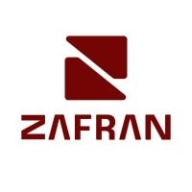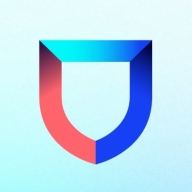


Lacework FortiCNAPP and IBM Guardium Vulnerability Assessment compete in security management and threat assessment. IBM Guardium is often more effective due to its robust features and value, despite higher costs, while Lacework FortiCNAPP is better in support and affordability.
Features: Lacework FortiCNAPP offers cloud-native security, anomaly detection, and scalability with seamless integration appealing to organizations focused on cloud environments. IBM Guardium provides advanced vulnerability analysis, strong compliance management, and in-depth database protection, catering to environments needing comprehensive security capabilities.
Ease of Deployment and Customer Service: Lacework FortiCNAPP's cloud-centric deployment is straightforward and reduces complexity, providing faster setup. IBM requires more complex deployment due to its enterprise features but offers solid customer support to ensure smooth implementation. Lacework's simpler integration appeals to those seeking ease, while IBM's support effectively manages its intricate deployment.
Pricing and ROI: Lacework FortiCNAPP is budget-friendly with quicker ROI due to lower setup and maintenance costs, ideal for cost-sensitive organizations. IBM Guardium's premium pricing, justified by extensive capabilities, offers a better long-term investment for businesses requiring advanced security features. Lacework's economical security benefits are balanced by IBM's superior ROI through its feature depth in high-end applications.
| Product | Market Share (%) |
|---|---|
| Zafran Security | 1.0% |
| Lacework FortiCNAPP | 1.3% |
| IBM Guardium Vulnerability Assessment | 0.5% |
| Other | 97.2% |


| Company Size | Count |
|---|---|
| Small Business | 4 |
| Midsize Enterprise | 4 |
| Large Enterprise | 3 |
Zafran Security integrates with existing security tools to identify and mitigate vulnerabilities effectively, proving that most critical vulnerabilities are not exploitable, optimizing threat management.
Zafran Security introduces an innovative operating model for managing security threats and vulnerabilities. By leveraging the threat exposure management platform, it pinpoints and prioritizes exploitable vulnerabilities, reducing risk through immediate remediation. This platform enhances your hybrid cloud security by normalizing vulnerability signals and integrating specific IT context data, such as CVE runtime presence and internet asset reachability, into its analysis. No longer reliant on patch windows, Zafran Security allows you to manage risks actively.
What are the key features of Zafran Security?
What benefits can users expect from Zafran Security?
In industries where security is paramount, such as finance and healthcare, Zafran Security provides invaluable protection by ensuring that only exploitable vulnerabilities are addressed. It allows entities to maintain robust security measures while allocating resources efficiently, fitting seamlessly into existing security strategies.
IBM Guardium Vulnerability Assessment scans data infrastructures (databases, data warehouses and big data environments) to detect vulnerabilities, and suggests remedial actions. The solution identifies exposures such as missing patches, weak passwords, unauthorized changes and misconfigured privileges.
Lacework FortiCNAPP provides robust cloud security, combining vulnerability management and multi-cloud insight with user-friendly controls, machine learning detection, and compliance support.
Lacework FortiCNAPP specializes in cloud security by merging machine learning anomaly detection with agent-based vulnerability management to offer detailed alerts and compliance reports. Its comprehensive approach allows continuous monitoring across AWS and Kubernetes, providing insights from an attacker's perspective. The platform offers automation and seamless Slack integration, facilitating collaborative and efficient cloud security management. Users value its ability to handle multi-cloud environments and scan IAC scripts, configurations, and compute nodes across AWS and GCP.
What are the key features?Organizations across sectors leverage Lacework FortiCNAPP for cloud security, focusing on compliance, security posture, and vulnerability management. It is widely used for monitoring AWS and Kubernetes environments, scanning IAC scripts, configurations, and securing compute nodes. It supports multi-cloud security posture management and log ingestion, enabling companies to maintain strong cloud infrastructures without dedicated security layers.
We monitor all Vulnerability Management reviews to prevent fraudulent reviews and keep review quality high. We do not post reviews by company employees or direct competitors. We validate each review for authenticity via cross-reference with LinkedIn, and personal follow-up with the reviewer when necessary.